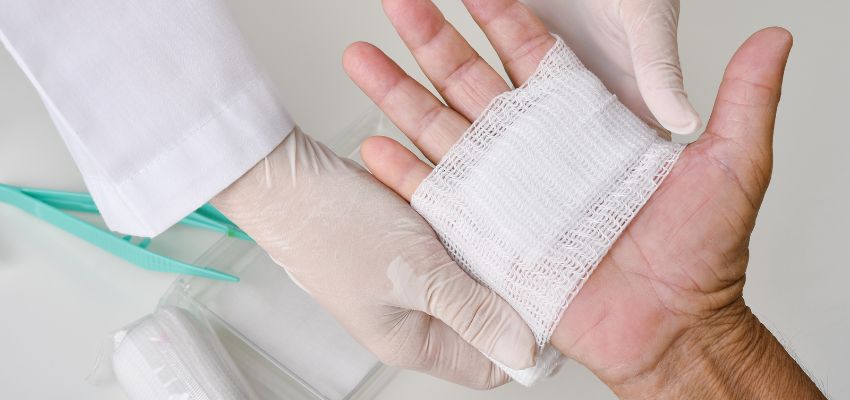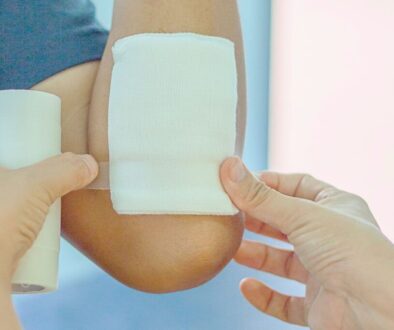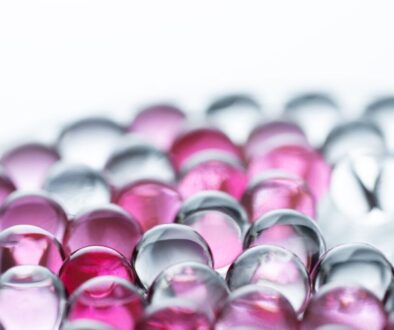Effective Chronic Wound Treatment: A Guide To Healing

Types Of Chronic Wounds
Chronic wounds are more than slow-healing injuries. They often result from underlying health problems or ongoing pressure. Knowing the types of chronic wounds is key to unlocking the right path to treatment and care.
Pressure Ulcers
Pressure ulcers, commonly known as bedsores, develop due to prolonged pressure on the body. They often form on the skin over bony areas like the hips or tailbone. They usually affect individuals who are bedridden or have limited mobility.
Diabetic Ulcers
Diabetic ulcers are open wounds that typically appear on the feet. Nerve damage from uncontrolled blood sugar levels makes individuals with diabetes more prone to these ulcers. Left untreated, diabetic ulcers can lead to severe infections and even gangrene.
Venous Ulcers
These ulcers form due to poor blood flow in the legs, usually around the ankles. Faulty vein valves contribute to increased pressure in the veins, leading to the development of these wounds.
Arterial Ulcers
Arterial ulcers (or ischemic ulcers) occur when the arteries cannot supply sufficient oxygen to the tissues. These wounds are typically deeper and can become severe if blood circulation is not restored.
What Are The Causes Of Chronic Wounds?
Chronic wounds are a significant challenge. They often result from factors that disrupt the body’s natural healing process. Here’s a closer look at what might be causing them:
- Poor circulation. Conditions such as diabetes, high blood pressure, and chronic venous insufficiency can impair blood flow. The oxygen and nutrients essential for healing struggle to reach the wound site without adequate blood supply.
- Infection. When a wound becomes infected, the body focuses on fighting bacteria, which slows down tissue repair and healing.
- Repeated trauma. Reopening or reinjuring a wound prevents it from adequately closing, creating a cycle of delayed healing.
- Aging. As we age, natural healing slows. Reduced blood flow and age-related health issues make older adults more prone to chronic wounds.
- Medications. Certain medications, like corticosteroids, can suppress the body’s healing response, making it harder for wounds to repair efficiently.
Understanding these causes is key to managing and preventing chronic wounds effectively.
Chronic Wound Treatment At Home
While professional medical care is crucial at times, there are simple and practical measures you can take at home to boost your recovery and heal faster.
Take The Prescribed Medications
Follow your doctor’s instructions when taking medications, including pain relievers and antibiotics. This helps manage discomfort and lowers the risk of infection.
Perform Proper Wound Care
Gently clean the wound and cover it as instructed. Avoid using harsh cleaning agents like hydrogen peroxide or alcohol, as they may impede the healing process.
Keep Pressure Off The Affected Area
Your doctor will advise you on reducing pressure on your wound to aid healing. If it’s on your leg or foot, you may need crutches, a wheelchair, a cast, a walking boot, or a special shoe. Use pressure-relieving supports like cushions and adjust your position regularly to avoid straining the wound.
Wear Compression Stockings
Compression stockings are an effective tool for managing venous ulcers. They promote healing by enhancing blood circulation and minimizing swelling.
Elevate The Injured Area
Keeping the wound above heart level helps minimize swelling and promotes better circulation.
Avoid Smoking
Smoking reduces blood flow, which can significantly delay wound healing. Quitting can help speed up your recovery and improve overall health.
Stay Hydrated
Proper hydration is critical for the optimal functioning of your body. Drinking water consistently helps transport nutrients and keeps you hydrated, which is essential for effective wound healing.
Prioritize Nutritious Foods
A balanced diet can support healing. Focus on essential nutrients like vitamins A and C, protein, and key compounds. Eat fresh fruits, vegetables, lean proteins, and nuts. These foods fuel recovery and boost well-being.
Stay Active
Light activities like walking can improve blood circulation and, with your doctor’s approval, support healing.
Medical Management Of Chronic Wounds
When home remedies are insufficient, medical treatments may be required. Below are some commonly considered chronic wound treatment options:
- Debridement. This is a surgical procedure in which a doctor removes dead, damaged, or infected tissue from a wound. Removing this tissue supports quicker and more effective healing while decreasing the likelihood of infection. It’s often used for chronic or non-healing wounds.
- Medications. Antibiotics prevent or treat infections at the wound site, ensuring the healing process isn’t delayed. Pain relievers, either over-the-counter or prescription, help manage discomfort and improve the patient’s quality of life during recovery.
- Wound dressings. Wound dressings are chosen according to the type and severity of the wound. They can include basic gauze or advanced dressings such as amniotic membrane allografts. Some dressings maintain moisture or absorb drainage, while others deliver medications directly to the wound.
- Topical treatments. Specialized ointments, gels, or medicated dressings are often applied to the wound to protect it from further damage and promote tissue regeneration. These treatments may also contain ingredients that reduce bacteria or inflammation.
- Compression therapy. Compression therapy is often used for venous ulcers. It applies pressure using specialized bandages or stockings. This reduces swelling, improves blood flow, and helps prevent fluid buildup in the affected area, aiding healing.
- Oxygen therapy. Hyperbaric oxygen therapy places patients in a pressurized chamber. They breathe pure oxygen inside. This stimulates blood vessel growth and increases oxygen at wound sites, supporting the body’s natural healing process.
- Advanced procedures. For severe or non-healing wounds, more intensive interventions may be required. These include skin grafting, where healthy skin is transplanted to cover the wound, or vascular surgery to improve blood flow in cases of compromised circulation.
- Lifestyle counseling. In many cases, wounds are linked to underlying health issues or habits that delay healing. Patients are advised to improve their health with proper nutrition. Quitting smoking is also recommended. Keeping a healthy weight and engaging in regular physical activity can be beneficial. These steps reduce the risk of future wound complications.
Comprehensive chronic wound healing treatment plans typically combine several of these approaches. These are tailored to each individual’s needs. The objective is to promote healing and prevent recurrence.
Frequently Asked Questions
Can chronic wounds fully heal?
Most chronic wounds can heal over time with proper medical care and attention.
How can I tell if my wound is infected?
Observe for symptoms such as increased pain, swelling, redness, warmth, fever, or pus.
Is it safe to clean a wound with alcohol?
No, alcohol can irritate the tissue and hinder the healing process. Instead, opt for mild soap or a wound cleanser.
Will surgery be necessary for my chronic wound?
Depending on the severity of the wound, surgical procedures like debridement or skin grafts may be needed.
Are compression stockings suitable for everyone?
Not everyone can safely use compression stockings. Consult your doctor to determine whether they’re appropriate for your wound type.

Take Charge Of Your Chronic Wound Healing Journey
Chronic wounds can be a significant burden, but effective treatment options are available. Recovery is possible by understanding the types, causes, and home care techniques, alongside professional medical intervention when necessary. Consult your healthcare provider to create a chronic wound treatment plan that ensures optimal results. Take the first step towards healing today and reach out to your healthcare provider to start your journey.
Heal Ulcers, Burns, & Surgery Wounds With Break-Through Amniotic Allograft Treatments
Experience the future of wound care with our advanced amniotic allograft treatments. Say goodbye to slow healing. Our innovative solutions promote faster recovery from pressure wounds, ulcers, burns, and surgical wounds. Trust the power of science for your healing journey. Regain your comfort and health today! See if you are eligible for treatment here.

About The Author
Corinne Grace is a full-time writer living in the Philippines. She has a nursing degree from Riverside College. Her background in nursing informs her perspective, allowing her to weave in themes of health, empathy, and resilience into her work.




